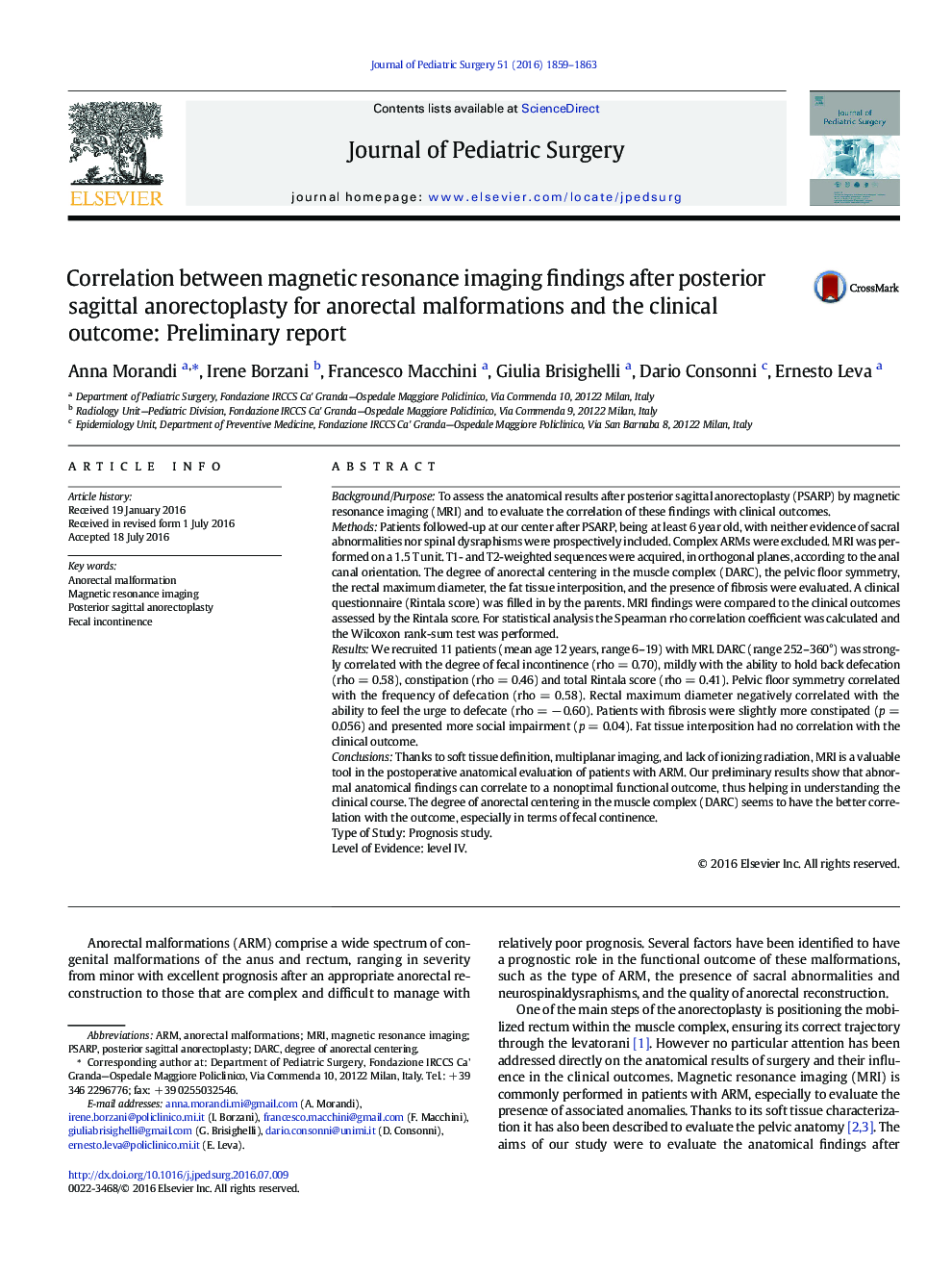| کد مقاله | کد نشریه | سال انتشار | مقاله انگلیسی | نسخه تمام متن |
|---|---|---|---|---|
| 5718382 | 1411248 | 2016 | 5 صفحه PDF | دانلود رایگان |
Background/PurposeTo assess the anatomical results after posterior sagittal anorectoplasty (PSARP) by magnetic resonance imaging (MRI) and to evaluate the correlation of these findings with clinical outcomes.MethodsPatients followed-up at our center after PSARP, being at least 6 year old, with neither evidence of sacral abnormalities nor spinal dysraphisms were prospectively included. Complex ARMs were excluded. MRI was performed on a 1.5 T unit. T1- and T2-weighted sequences were acquired, in orthogonal planes, according to the anal canal orientation. The degree of anorectal centering in the muscle complex (DARC), the pelvic floor symmetry, the rectal maximum diameter, the fat tissue interposition, and the presence of fibrosis were evaluated. A clinical questionnaire (Rintala score) was filled in by the parents. MRI findings were compared to the clinical outcomes assessed by the Rintala score. For statistical analysis the Spearman rho correlation coefficient was calculated and the Wilcoxon rank-sum test was performed.ResultsWe recruited 11 patients (mean age 12 years, range 6-19) with MRI. DARC (range 252-360°) was strongly correlated with the degree of fecal incontinence (rho = 0.70), mildly with the ability to hold back defecation (rho = 0.58), constipation (rho = 0.46) and total Rintala score (rho = 0.41). Pelvic floor symmetry correlated with the frequency of defecation (rho = 0.58). Rectal maximum diameter negatively correlated with the ability to feel the urge to defecate (rho = â 0.60). Patients with fibrosis were slightly more constipated (p = 0.056) and presented more social impairment (p = 0.04). Fat tissue interposition had no correlation with the clinical outcome.ConclusionsThanks to soft tissue definition, multiplanar imaging, and lack of ionizing radiation, MRI is a valuable tool in the postoperative anatomical evaluation of patients with ARM. Our preliminary results show that abnormal anatomical findings can correlate to a nonoptimal functional outcome, thus helping in understanding the clinical course. The degree of anorectal centering in the muscle complex (DARC) seems to have the better correlation with the outcome, especially in terms of fecal continence.Type of Study: Prognosis study.Level of Evidence: level IV.
Journal: Journal of Pediatric Surgery - Volume 51, Issue 11, November 2016, Pages 1859-1863
